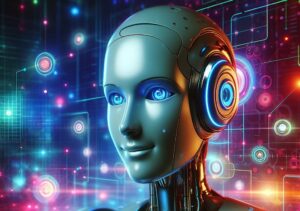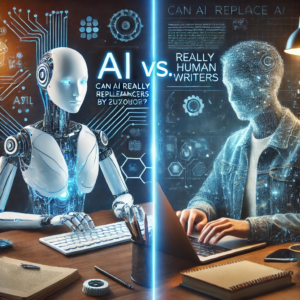The Ultimate Guide to Generative AI Business Applications: Transforming Industries
Introduction: A New Era of Technological Wonder
Generative AI business applications have ushered in a revolution that feels like magic come to life. As Arthur C. Clarke famously stated, any sufficiently advanced technology is indistinguishable from magic, and the first encounter with generative AI often evokes this sense of wonder. For the first time in human history, we have a technology that can comprehend our languages, interpret our requests, and produce entirely novel output.
This AI can craft poetry, conjure otherworldly images, write code, surprise us with original jokes, and compose music. It’s an act of creation that inspires awe and wonder in those who witness it. However, it’s crucial to understand that AI is not magic – it’s the product of sophisticated mathematics and scientific advancements.
The journey to this point has been decades in the making, involving countless breakthroughs and innovations. As we stand on the cusp of a new technological era, it’s clear that AI will touch every aspect of our lives and change the world as we know it. Yet, how it will shape our future is ultimately up to us – all of us.
We strongly recommend that you check out our guide on how to take advantage of AI in today’s passive income economy.
Table of Contents
The Origins of AI: From Theory to Reality
The Visionaries Who Sparked the AI Revolution
The concept of machines that could think has captivated human imagination since the late 1800s. However, it was Alan Turing’s seminal paper in 1950 that truly planted the seeds of artificial intelligence. Historians rightfully call Turing the father of AI, as he theorized about computers that could play chess, surpass human players, and become proficient in natural language.
Turing’s work was just the beginning. If his 1950 paper was the spark, the Dartmouth Workshop in 1956 was the Big Bang of AI. A small group of young academics and senior scientists from Bell Labs and IBM proposed an extended summer workshop to intensively consider artificial intelligence. This event marks the official establishment of AI as a field of research and the coining of the term “artificial intelligence.”
The Parallel Evolution of Hardware and AI
As AI theories and techniques developed, so did the hardware necessary to bring these ideas to life. The invention of the transistor, which won the Nobel Prize in 1956, paved the way for the powerful GPUs we have today, capable of housing over 100 billion transistors. This convergence of AI theories and hardware advancements has made generative AI a practical reality.
The Three Pillars of Generative AI
1. Model Architecture: The Blueprint of Intelligence
Generative AI business applications rely on sophisticated model architectures, particularly large language models (LLMs). These models represent language in a high-dimensional space with billions of parameters, created by training on massive quantities of text. This new way of representing data allows for the discovery of intricate patterns and relationships.
2. Compute Power: The Engine of AI
The second pillar of generative AI is computational power. The dramatic reduction in compute and storage costs over the years has made it possible to train and run these complex models efficiently. Banks of interconnected GPUs provide the necessary horsepower to create and execute generative AI functions at scale.
3. Data: The Lifeblood of AI Systems
Perhaps the most critical component, especially for businesses, is data. Generative AI business applications thrive on high-quality, relevant data. It’s essential to understand that you can’t talk about generative AI without discussing the role of data. It’s the third leg of the AI stool: model architecture, plus compute, plus data.
The Evolution of Data Representation
From Tables to Neural Networks
The history of computing has largely been about finding new ways to represent and extract value from data. We started with simple tables and databases, moved on to graph representations, and now we have large language models. These models use neural networks that simulate an abstract version of brain cells, with layers upon layers of connections and billions of parameters.
Self-Supervised Learning: A Game-Changer
Around 2017, a new approach called self-supervised learning emerged, powered by an architecture called transformers. This method allows models to train on large amounts of unlabeled data, resulting in more generalizable and adaptable representations. These are called foundation models, which can be fine-tuned for a wide range of downstream tasks.
The Versatility of AI Languages
Generative AI business applications are not limited to human languages. Industrial equipment signals, user navigation patterns, software code, and even chemical diagrams can be interpreted as languages. This versatility allows AI to boost productivity across various domains, from HR processes and customer service to cybersecurity and application modernization.
The Impact of Generative AI on Business and Society
A Balanced Perspective
As with any transformative technology, opinions on generative AI range from utopian optimism to dystopian anxiety. A moderate, scientific view acknowledges both the potential benefits and challenges. Generative AI business applications have the power to accelerate discovery and innovation in fields such as materials science, medicine, energy, and climate change mitigation.
The Rapid Rise of Generative AI
In less than a year, generative AI has evolved from a fascinating novelty to a new business imperative. The landscape is constantly changing, with new models and applications emerging daily. While the future is uncertain, it’s clear that active engagement in shaping this journey is crucial for businesses and individuals alike.
Four Key Principles for Navigating the AI Landscape
1. Protect Your Data
Your data and the AI representations derived from it are your competitive advantage. Safeguarding this valuable asset is paramount in the era of generative AI business applications.
2. Embrace Transparency and Trust
Ensure that your AI systems are as transparent and explainable as possible. This approach builds trust and allows for better decision-making based on AI recommendations.
3. Implement AI Ethically
Train your models on legally accessed, high-quality data that is accurate, relevant, and free from bias and toxic elements. Ethical AI is not just a moral imperative but a business necessity.
4. Take Control of Your AI Destiny
Empower yourself and your organization with the platforms and processes needed to control your AI journey. While you don’t need to become an AI expert, a solid foundation of knowledge is essential for making informed decisions about AI implementation.
Conclusion: Shaping the Future of AI Together
The future of AI is not about a handful of powerful models controlling everything. It’s about democratization, leveraging open science and open-source AI to ensure that everyone has a voice in shaping what AI becomes and how it impacts society. As generative AI business applications continue to evolve, it’s time for organizations to start making plans for effective, safe, and responsible AI integration.
By understanding the foundations of generative AI, protecting your data, embracing ethical principles, and taking an active role in your AI journey, you can position your business at the forefront of this technological revolution. The rise of generative AI for business is not just about adopting new tools – it’s about reimagining the future of work, innovation, and human potential.
Frequently Asked Questions: Generative AI in Business
What is generative AI used for in business?
Generative AI business applications are revolutionizing various aspects of modern enterprises. These powerful tools are being used to:
- Streamline content creation, including marketing copy, product descriptions, and reports
- Enhance customer service through intelligent chatbots and virtual assistants
- Optimize product design and development processes
- Improve decision-making by analyzing complex data sets and generating insights
- Automate repetitive tasks, freeing up human resources for more strategic work
Generative AI business applications are continuously evolving, offering new ways to boost productivity and innovation across industries.
What are the common applications of generative AI?
Generative AI business applications span a wide range of industries and functions. Some common applications include:
- Natural Language Processing (NLP) for text generation and analysis
- Image and video generation for marketing and design purposes
- Code generation to assist software developers
- Voice synthesis for creating lifelike digital assistants
- Predictive analytics for forecasting trends and behaviors
- Personalization engines for tailored customer experiences
- Data augmentation to enhance machine learning models
These generative AI business applications are transforming how companies operate and interact with their customers.
What are the four commonly used GenAI applications?
While generative AI business applications are diverse, four commonly used applications stand out:
- Text Generation: Creating written content, from articles and reports to marketing copy and product descriptions
- Image Generation: Producing original images, illustrations, and designs based on text prompts
- Code Generation: Assisting developers by automatically generating code snippets or entire programs
- Conversational AI: Powering chatbots and virtual assistants for customer service and internal support
These generative AI business applications are at the forefront of AI-driven innovation in the corporate world.
What is the application of AI in business?
AI, including generative AI business applications, is being applied across various business functions:
- Marketing and Sales: Personalizing customer experiences, creating targeted content, and predicting consumer behavior
- Operations: Optimizing supply chains, automating processes, and improving efficiency
- Human Resources: Streamlining recruitment, enhancing employee training, and analyzing workforce trends
- Finance: Detecting fraud, automating financial reporting, and providing predictive analytics for investment decisions
- Product Development: Accelerating ideation, prototyping, and testing of new products and services
- Customer Service: Providing 24/7 support through AI-powered chatbots and virtual assistants
- Cybersecurity: Detecting and responding to threats in real-time, enhancing overall security posture
Generative AI business applications are continually expanding, offering new opportunities for companies to innovate and gain competitive advantages in their respective markets.

We strongly recommend that you check out our guide on how to take advantage of AI in today’s passive income economy.




